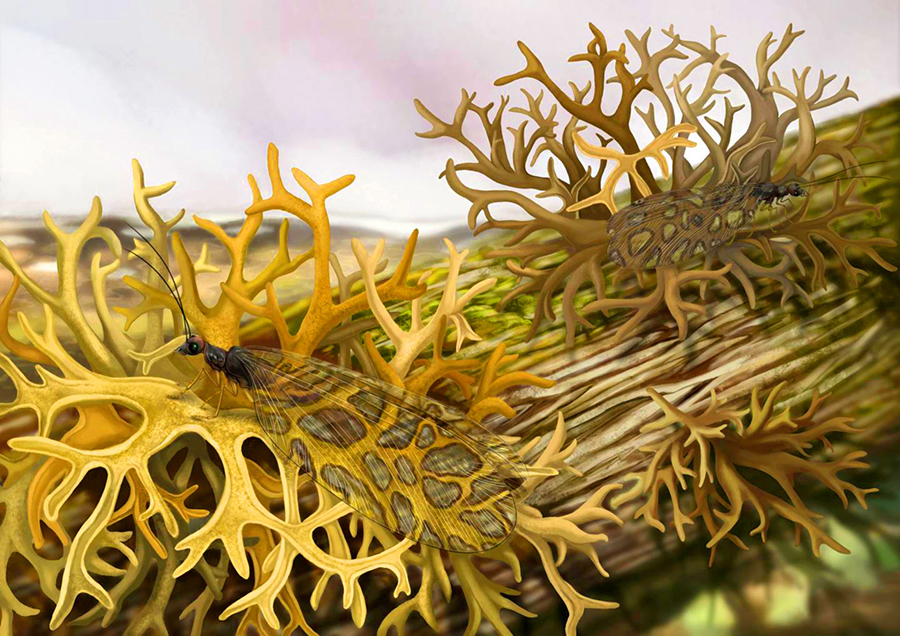Jurassic Lacewings Mimicked Lichen to Hide from Predators

Paleontologists in China have unearthed the fossil evidence of a mimetic relationship between two species of moth lacewings and the co-occurring fossil lichen Daohugouthallus ciliiferus. The discovery, described in a paper in the journal eLife, predates modern lichen-insect associations by 165 million years, indicating that during the mid-Mesozoic Era, the lichen-insect mimesis system was well established and provided lacewings with highly honed survival strategies.
Many modern insects mimic other organisms or use camouflage to hide from predators. For example, some animals mimic lichens, which are formed from algae and fungus, and grow almost everywhere on Earth, from the Arctic to the desert.
The most iconic example of an insect mimicking a species of lichen is the peppered moth.
During the industrial revolution, darker colored moths were better at surviving. But when the revolution ended and pollution levels declined, species of lichen began to re-emerge and increase the survival of paler moths.
Yet, it is unclear how and when insects first evolved this ingenious survival strategy, as distinctive examples of insects mimicking lichens are missing from fossil records.
“As lichen models are almost absent in the fossil record of mimesis, it is still unclear as to when and how the mimicry association between lichen and insect first arose,” said lead author Hui Fang, a Ph.D. student in the College of Life Sciences and Academy for Multidisciplinary Studies at Capital Normal University.
“The key to answer this question is to find early examples of a lichen-like insect and a co-occurring lichen fossil.”

Fang and colleagues discovered deposits at the Daohugou 1 locality of Inner Mongolia in northeastern China that showed the 165-million-year-old lichen mimesis.
The samples involved two species of Lichenipolystoechotes, a newly-described genus within the moth lacewing family Ithonidae, resembling the co-existing lichen from the Middle Jurassic epoch.
The researchers documented this mimetic relationship by describing structural similarities and detailed measurements of the lacewing and lichen.
Their results suggest that when the lacewings, named Lichenipolystoechotes ramimaculatus and Lichenipolystoechotes angustimaculatus, rested in a lichen-rich habitat, a near-perfect match of their appearances would assist the insects’ concealment from predators.
“Our findings indicate that a micro-ecosystem consisting of lichens and insects existed 165 million years ago in northeastern China,” said senior author Dr. Yongjie Wang, also from the College of Life Sciences and Academy for Multidisciplinary Studies at Capital Normal University.
“This adds to our current understanding of the interactions between insects and their surroundings in the Mesozoic Era, and implies that there are many more interesting insect relationships awaiting discovery.”
_____
Hui Fang et al. 2020. Lichen mimesis in mid-Mesozoic lacewings. eLife 9: e59007; doi: 10.7554/eLife.59007
Source: www.sci-news.com/








